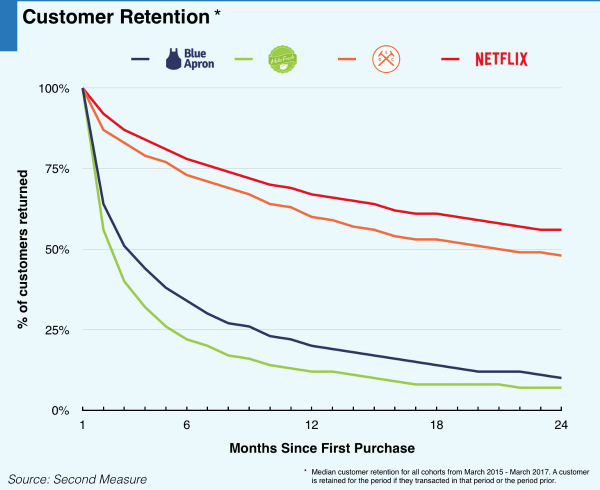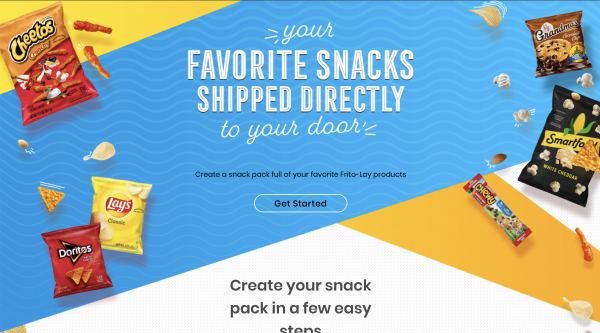Post by Jon Goldstone, Managing Partner (Global).
Consumers have never been more open to buying from brands than during the current Covid-19 crisis; social distancing and lockdowns have made shopping in physical stores more hassle or even impossible. “This marks a great opportunity to open a new high growth channel and many brands are rightly rushing to jump on this opportunity,” reported the Drum in a recent article (1).
However, whilst selling your current product range direct to consumers (DTC) might work fine for now, how can you maximise chances that your new DTC customers stick around once lockdown eases and normal shopping habits return?
To get some insight on this question, I got together with Alastair McKerrow, a consultant who recently spent 6 months inside SimplyCook, one of the UK’s fastest growing e-commerce food businesses. In this post we look at three big questions that any brand owner should ask themselves to help develop a DTC business that will thrive beyond the current crisis.
1. What is my business model and are subscriptions the way to go?
Creating a viable DTC business model is challenging, as we explored in an earlier post here: maximising recurring revenue whilst minimising costs including customer acquisition, packaging, postage and returns. Acquisition costs in particular are eye-wateringly high, with Facebook and Google the beneficiaries. A high basket size and/or a subscription model are the main routes to recouping the cost of acquiring each consumer.
However, if you are going down the subscription route be clear – having products regularly delivered to the door is not always a consumer benefit. 80% of customers leaving one online UK brand stated a dislike for subscriptions as being the main reason they left. The churn that results is the Achilles heel of subscription business models. After 24 months c.90% of customers from online cooking kit brands Hello Fresh and Blue Apron had not returned (below) with Dollar Shave Club more successful, losing around half its customers. (2).Clearly, to have a chance of being sustainable, your D2C proposition needs to offer benefits greater than the extra hassle it creates.

Another key challenge is to consider how D2C will interact with your physical channels as part of an ‘omnichannel’ strategy. Pre-crisis learning shows how hard it is to create a sustainable, stand-alone DTC business model. Even well-known darlings of the DTC world like Graze, Harry’s and Quip quickly evolved to also sell in physical retail outlets, which make up to 90% of sales. In these cases, it seems, DTC was not a stand-alone business model, more a good way to incubate a larger omnichannel business
2. What benefits can I offer to my consumer that cannot be provided through retail?
Conventional retail has many limitations that you should seek to exploit. Here are some to consider:
Limited Range: retailers are cutting back on brands and on the SKUs they offer per brand, to make logistics efficient and promote more profitable own brand offers. Do you have a ‘long tail’ offering that wouldn’t make the cut in traditional retail but that might have a life in a D2C offer?
Minimal Engagement: simple shelves with minimal communication clutter make stores seem neater. Shoppers want to get in and out as quickly as possible, so choices must be made simple. Do you have an offering that would benefit from the higher level of engagement that D2C provides?
Standardised Flow: stores are laid out in an order that doesn’t work for all shopping trips. Just think how many shelves you need to visit just to put together one scratch cooked meal. Do you have an offering that provides a ‘system’ or convenient ‘bundle’ that traditional retailers struggle to provide?
Slow and Inflexible: Infrequent range reviews and high stock requirements mean that retail takes time to react to the latest trends. Do you have an offering that involves the presentation of new products on a weekly rather than annual basis?
Low Price Expectation: over half of all products bought in UK supermarkets cost less than £1. If you are seeking to offer a premium benefit with a premium price tag, this may be better done out of sight of the cheap incumbents instore. Do you have an offering that breaks the price conventions set by traditional retailers?
3. Who can I take inspiration from?
Here are some examples of successful, distinctive e-commerce businesses that meet a relevant consumer need that can’t be fully met in traditional retail:
Personalise: Function of Beauty offers personalised haircare products, designed specifically for you. They claim 54 trillion possible outcomes, and will even let you name the product you create. Worth paying a hefty premium for? Tails.com offers a similar service for our furry friends, with pet food tailored to your dog’s breed, age and weight. It even arrives with your dog’s name on the front of the bag.
Leverage your portfolio: few people will want to buy individual consumer goods brands direct. “There’s no point launching a DTC business to sell a single bottle of ketchup,” pointed out Jean Philippe Nier, Kraft Heinz’s head of e-commerce (3). However, there may be potential in grouping brands together to solve a need. For example, PepsiCo recently rolled out Snacks.com to create a ‘snack pack’ from a selection of products (4).

Exclusive access: Heinz is another consumer goods brand that has been fast out of the blocks with a D2C offer, going from senior management pitch to a live e-commerce site in just 3 weeks. Heinz to Home offers a distinctive product offer with bundles that aren’t available in supermarkets, such as an ‘Essentials’ 16-can mix bundle, as well as sauces and babyfood packages (3).
Latest Trends with Super Flexibility: Colourpop.com launches new cosmetics within a week, to ensure your eyeshadow is keeping up with the latest trends. By producing in-house and cutting out mundane processes such as storage stability trials (and retailer sell-in and range review timings), they can ensure their customers stay on fashion’s cutting edge and fuel phenomenal social media engagement.
Remove the Inconvenience of Shopping: HelloFresh, Gousto, and BlueApron are aiming to make the hassle of grocery shopping a thing of the past, and enable you to easily cook some delicious dinners in the process. Allplants and Cook are modernising the frozen food segment with their large range of meals.
High Engagement Shopping: Standard bags of Huel are priced at £45 and up. Convincing shoppers to replace their meals with a powder shake takes a lot of education that is more effectively delivered on a website than in a supermarket.
Technology: Glossier offers an online skin tone matching service that will analyse your photo and recommend make-up that matches perfectly. This offers a more cost-effective, convenient and less intimidating alternative to the traditional department store consultation.
Community and Purpose: The online toilet paper business Who gives a crap donates 50% of profits to build toilets in disadvantaged countries. This feel-good factor coupled with eye-catching packaging and a memorable name will significantly increase referrals, reduce acquisition costs and discourage churn.
Partner on Logistics: one barrier for consumer goods companies going direct is the logistical challenges involved. One solution is to develop DTC partnerships. Hershey this week announced a deal with delivery app firms Swiggy and Dunzo to launch an online store in India. And Unilever announced that it was teaming up with Grocemania to allow consumers to order ice cream online (5).
In conclusion, during lock-down consumers have been more open to buying direct that ever before. However, if you only offer products that are available through retail, it’s likely that most consumers will return to their normal channels as the crisis fades.
If you want to diversify your channels meaningfully by creating a long-term DTC business, stop thinking “how can I sell my brand online?”. Instead ask, “what benefits can I bring to consumers that cannot be delivered through a retailer, and what business model allows me to do that profitably?”.
Sources:
(1) https://www.thedrum.com/news/2020/04/09/how-harrys-eve-and-bloom-wild-are-coping-with-the-lockdown-dtc-demand-surge
(2) https://www.cbinsights.com/research/direct-to-consumer-retail-strategies/
(3) https://www.thegrocer.co.uk/online/how-brands-are-setting-up-dtc-operations-in-a-jiffy/605323.article
(4) https://www.forbes.com/sites/louisbiscotti/2020/05/18/direct-to-consumer-dtc-a-fad-or-the-beginning-of-a-trend/#3c6785604ca3
(5) https://www.just-food.com/comment/covid-19s-snacking-consumers-spark-d2c-flurry_id143780.aspx
